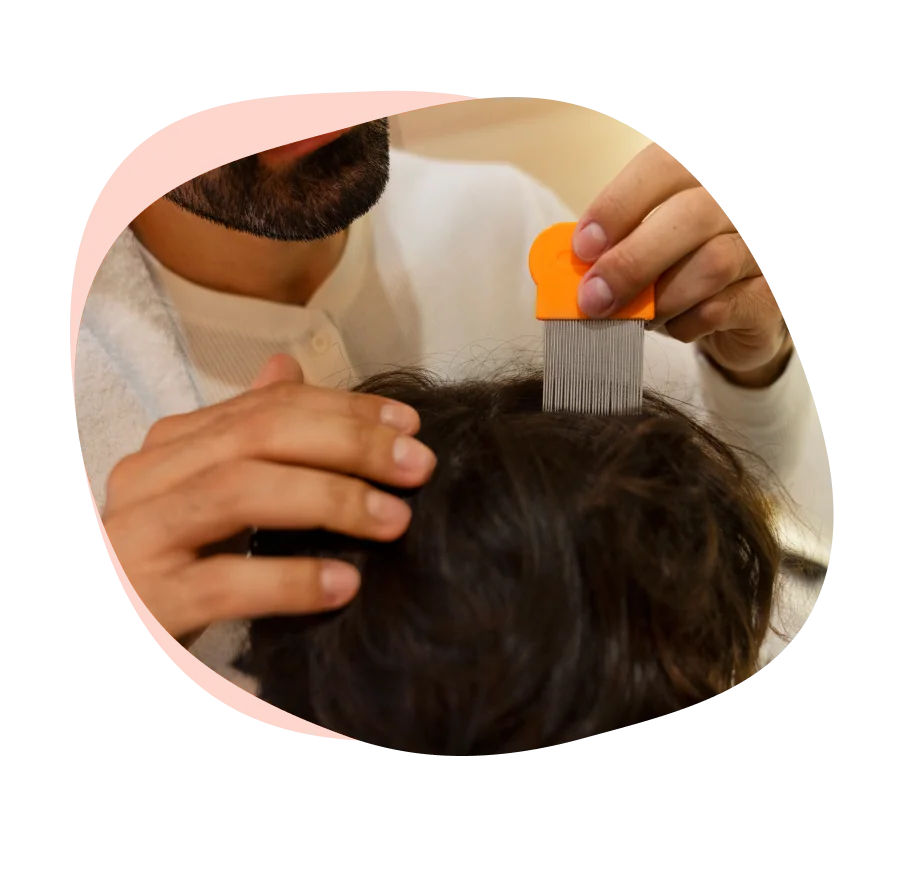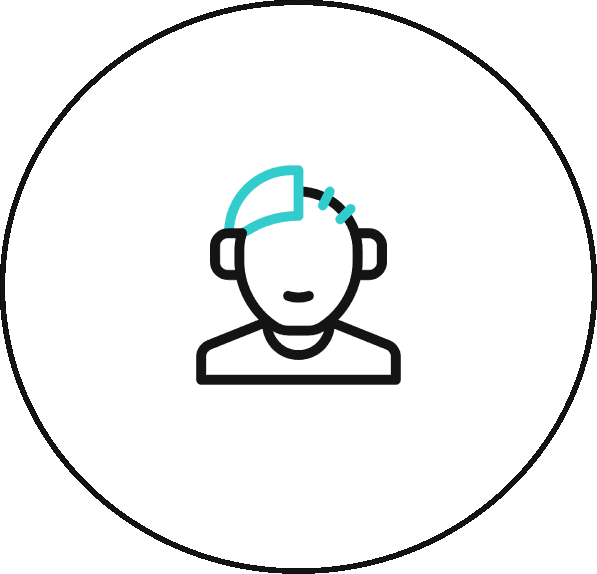Tractional Alopecia
Tractional Alopecia![]()
What is Traction Alopecia
Traction alopecia is a form of hair loss resulting from prolonged and repetitive pulling or tension on the hair follicles. This excessive force can damage the follicles, leading to hair thinning and, in severe cases, permanent baldness. Traction alopecia is commonly observed in individuals who frequently wear tight hairstyles such as braids, ponytails, cornrows, or extensions.
Symptoms of Traction Alopecia:
The symptoms of traction alopecia may vary depending on the severity of the condition. Common signs include:
- Thinning of hair along the hairline or in areas subjected to traction.
- Formation of small bumps or sores on the scalp.
- Redness, itching, or tenderness in the affected areas.
- Gradual widening of the part line or visible scalp in severe cases.
Causes of Traction Alopecia:
The primary cause of traction alopecia is the constant traction or pulling force applied to the hair follicles. Common factors contributing to this condition include:
- Tight Hairstyles: Hairstyles that involve tight braids, ponytails, buns, or extensions can exert constant tension on the scalp, leading to hair loss.
- Hair Accessories: Wearing tight hair accessories such as headbands, clips, or hairpins can also contribute to traction alopecia.
- Chemical Treatments:Overuse of chemical treatments like relaxers or perms, especially when combined with tight hairstyles, can weaken the hair shaft and increase susceptibility to traction alopecia.
Tractional Alopecia![]()
![]()
![]()
![]()
![]()
Treatment Options for Traction Alopecia
Treatment for traction alopecia focuses on relieving tension on the hair follicles and promoting hair regrowth. Options may include:
- Changing Hairstyles: Switching to looser hairstyles that minimize tension on the scalp can help prevent further hair loss.
- Platelet-Rich Plasma (PRP) Therapy: PRP therapy involves injecting platelet-rich plasma derived from the patient’s blood into the scalp to promote hair regrowth.
- hair transplantation:In severe cases where hair loss is permanent, hair transplantation surgery may be considered to restore lost hair.




Preventive Measures for Traction Alopecia
Preventing traction alopecia involves adopting healthy hair care practices and avoiding hairstyles or habits that exert excessive tension on the scalp. Consider the following preventive measures:
- Avoid Tight Hairstyles: Opt for looser hairstyles that do not pull or tug on the hair follicles.
- Limit Use of Hair Accessories:Minimize the use of tight hair accessories and opt for gentle alternatives.
- Maintain Scalp Health:Keep your scalp clean and well-nourished with regular washing and moisturizing.
- Seek Professional Advice: Consult a dermatologist if you notice signs of traction alopecia to receive personalized treatment recommendations.
Tractional Alopecia![]()
![]()
![]()
![]()
![]()
Conclusion
Traction alopecia is a common form of hair loss caused by repetitive pulling or tension on the hair follicles. By understanding its causes, symptoms, treatment options, and preventive measures, individuals can take proactive steps to protect their hair health and prevent further damage.
Why Choose Us?


Premier Surgeons: Expert alumni from AIIMS Delhi with 10+ years of experience.


Maximum Viability: Optimize graft survival with cutting-edge advanced Technology (Realtime Bio- Enhanced FUE)


Natural Hairline Design: Achieve the most natural hairline with 3000+ success stories.


Uncompromised Safety: 100% doctor-led surgeries with strict safety protocols.
Traction Alopecia![]()
![]()
![]()
![]()
![]()
Frequently Asked Questions
What is traction alopecia?
Traction alopecia is a loss of hair resulting from continuous tension at the hair follicle, often due to an overly tight hairstyle, which is commonly achieved through braiding, ponytails, or add-on hairpieces. This continuous tension may eventually cause damage to the follicles, leading to thinning and loss of hair.
Can Traction Alopecia Be Reversed?
Yes, traction alopecia can be reversed if detected early and the cause of tension on the hair is removed. However, if the problem persists and scar tissue is formed, hair loss will be permanent.
What does traction alopecia look like?
Some common signs and symptoms of traction alopecia include thinning of hair at the frontal hairline and temporal areas, scalp tenderness, and the formation of small bumps on the scalp. These will develop into smooth, hairless areas with time.
How can I avoid traction alopecia?
Prevention of traction alopecia requires avoiding these hairstyles or other habits that put too much stress on the hair follicles. One should also try to have looser hairstyles and allow intervals between tight hairstyles, and one should be gentle while they brush or style their hair.
Is traction alopecia common?
Traction alopecia is not an unusual problem at all and is quite common in individuals who regularly adopt tight hairstyles. It is more common in some groups ethnically because of the styling practices peculiar to cultural groups.
Is traction alopecia seen in children?
Yes, traction alopecia may be present in children due to the ensued factors of tight taping of hair into ponytails, cornrows, or buns. Make sure children’s hairstyles are not too tight and allow the scalp the ability to breathe.
Can traction alopecia be treated?
Treatment of traction alopecia consists of removing the cause of the tension to the hair and, if possible, the promotion of hair regrowth. In some severe cases, cosmetic tattooing can be used to help hair survival. Hair transplant surgery and reduction of tension are used for really bad cases with permanent scarring.
Reach Out for a Hair Transformation Today!
Contact Us.
Delhi: C-26, First Floor, Greater Kailash 1, New Delhi, 110048, India
Bhubaneswar: 2nd Floor, D 1 Square , Nandan Kanan Road , KIIT Square, Patia, Bhubaneswar, Odisha 751024
Uttarakhand: Gularbhoj Rd, near The Royal Gym, Dineshpur, Gurunanakpur, Uttarakhand 263160
Chennai: 39/2, RK Shanmugam Salai, Goutham Colony, K. K. Nagar, Chennai, Tamil Nadu 600078




